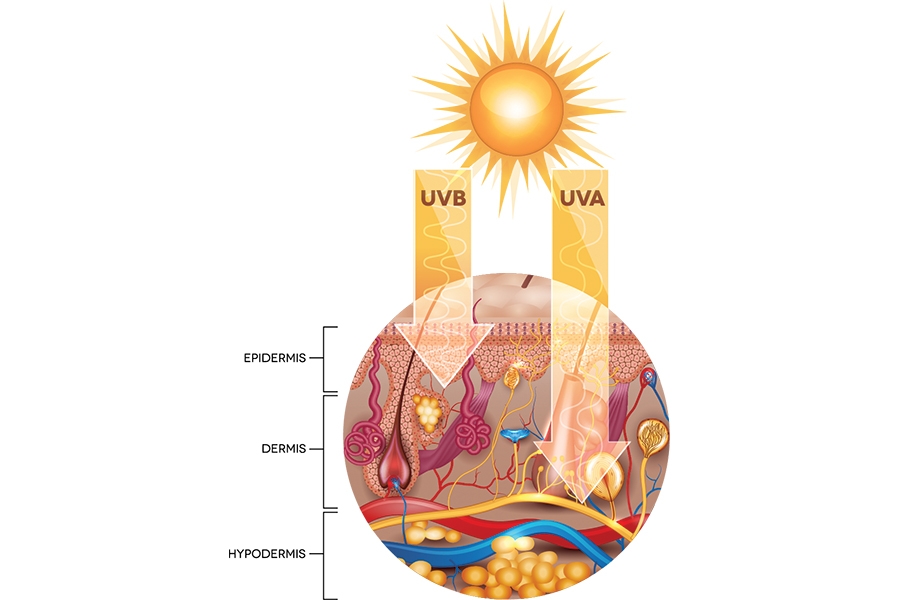Solar Science: Explaining the Difference Between UVA and UVB Rays to Clients
Written by Micah KopchenkoWith summer just around the corner, professionals should take time to educate clients on the difference between UVA and UVB rays. While both are harmful to skin, their unique and contrasting differences can have various effects. Up to 90 percent of visible aging is produced by sun damage. In sharing this information with clients, they can actively protect and prevent sun damage and harmful rays to their skin, as this is a leading cause of photoaging, premature aging, and skin cancer.
UVA RAYS
UVA rays can be defined as sun rays that are constantly and consistently available. Many individuals do not realize that this harmful ray can cause sun damage and burning even when the sun is not out. UVA rays penetrate deep into the stratum corneum. UVA rays can cause permanent sun damage that can incite premature aging and skin cancer. A well-practiced professional should be able to observe sun damage and its signs based on a client’s skin tone and use of protectants.
Protection
Suggest clients use some form of sun protection all year round in order to defend against UVA rays. Here are some examples:
Sunscreen sticks with easy roll on application
Window tints for cars and homes
Mineral sunscreen makeup
Facial sunscreens
Hats or umbrellas
Long sleeve clothing
Sunscreen lip balm
UVB RAYS
Ever wonder why skin turns red when exposed to the sun for long periods of time if no sunscreen is applied? Unlike UVA, UVB rays burn the very top layer of the epidermis. This redness that occurs on the skin is skin burning from the sun exposure. UVB rays are most powerful from mid-morning to late afternoon, between the months of April to October, depending on the area. UVB rays are also reflective, which means that sitting near a body of water, sand, or even skiing on fresh, white snow can cause skin to burn. It is estimated that the reflective rays of the sun can cause up to an 80 percent increase in its reflective power. This means that there is a “double bounce” that will cause rays to penetrate skin twice the amount.
Protection
It is of the utmost importance that professionals explain to clients why UVB rays can be dangerous, as this harmful ray is notorious for the development of skin cancer. Suggest to clients that they should always wear some form of sun protection that includes sunscreen with a high SPF (over 30) and protective clothing while engaging in outdoor activities, especially near water or snow. Remind clients that it is not only their face that needs protection from UVB rays and to apply a broad-spectrum SPF to their arms, legs, and any other area of skin that will be exposed to the sun.
Professionals can help clients defend against sun damage through education about the sun’s powerful rays. Make clients aware of UVA and UVB rays and teach them how they can accurately protect themselves from their harm, thereby reducing the risk of skin cancer and early onset skin aging.
